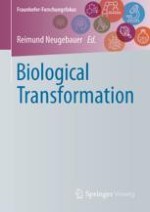2020 | OriginalPaper | Chapter
14. The Resource Principle
Utilization and Intelligent Reprocessing Routes for Wood-Based Materials, Natural Fibers and Organic Residues
Authors : Bohumil Kasal, Prof., Moritz Leschinsky, Dr., Christian Oehr, Prof., Gerd Unkelbach, Markus Wolperdinger, Dr.
Published in: Biological Transformation
Publisher: Springer Berlin Heidelberg
Activate our intelligent search to find suitable subject content or patents.
Select sections of text to find matching patents with Artificial Intelligence. powered by
Select sections of text to find additional relevant content using AI-assisted search. powered by
